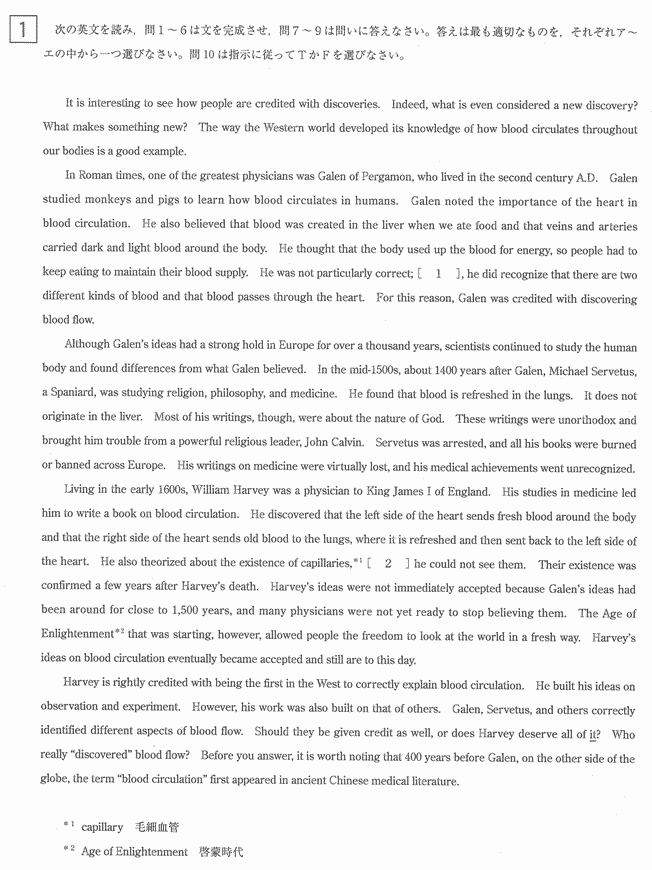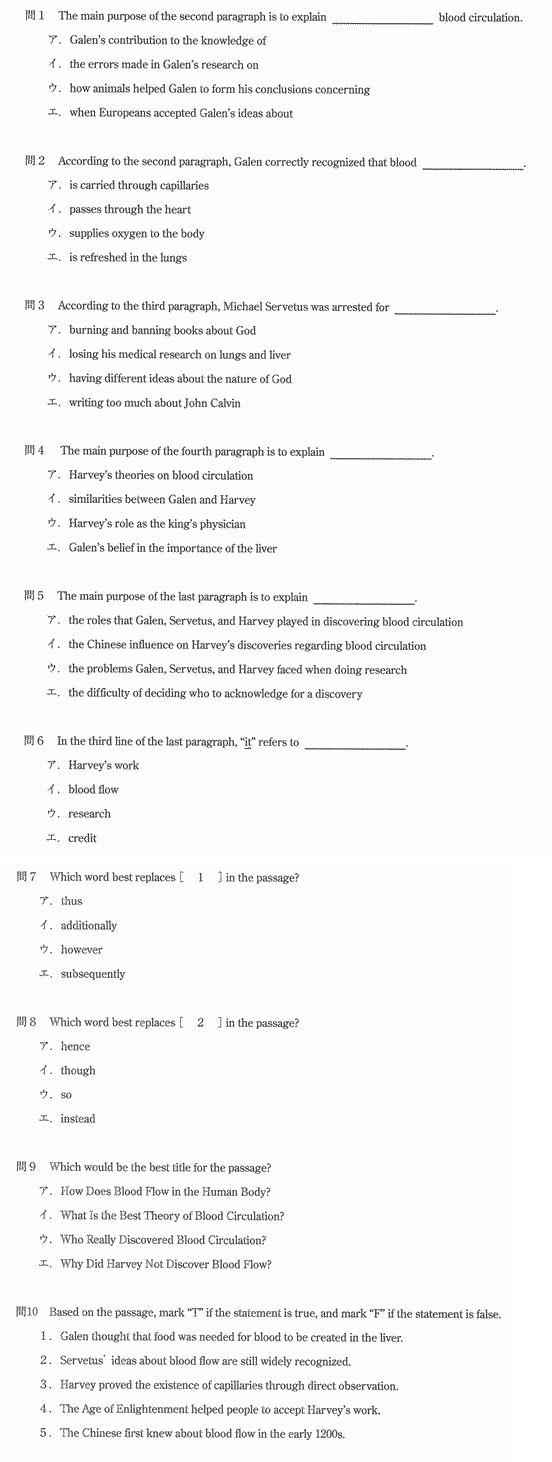
東海大学医学部過去問研究2015年度一般入学試験A方式英語入試問題
こんにちは 医学部受験担当の 吉川です。
2015年度 東海大学医学部一般入学試験A方式英語入試問題は連年通りの出題構成で1.長文総合 2.英文完成(適語選択) 3.類似語選択 4.会話文 5.英文整序 6.英文完成(図表のよみとり) 7.英文和訳 8.和文英訳でした。
昨年度の合格最低得点率は81%でしたが、標準レベルの出題ですが、語彙力が問われる例年通りの出題内容でした。
今回は1.長文総合を解説します。マーク形式の解答です。
問題1




